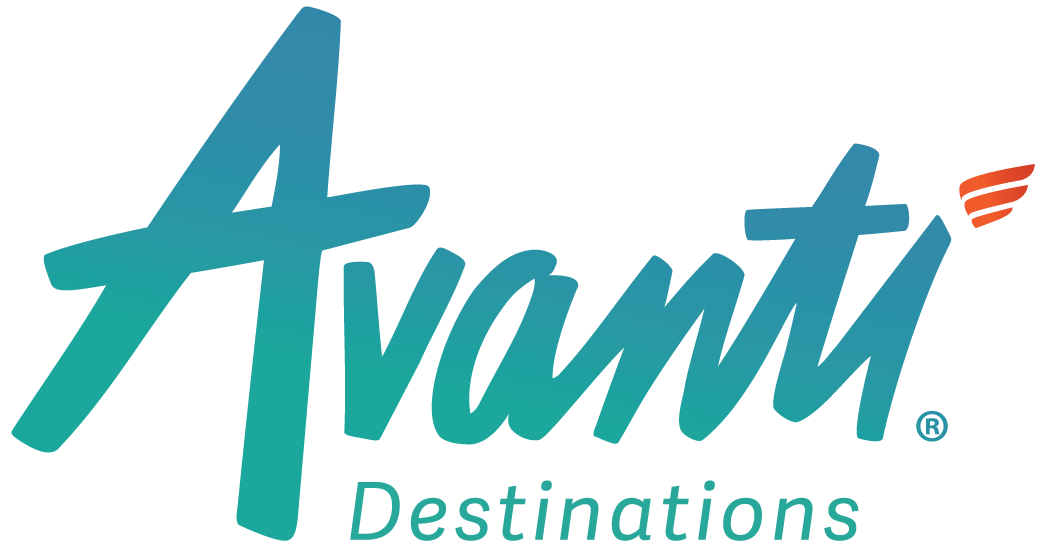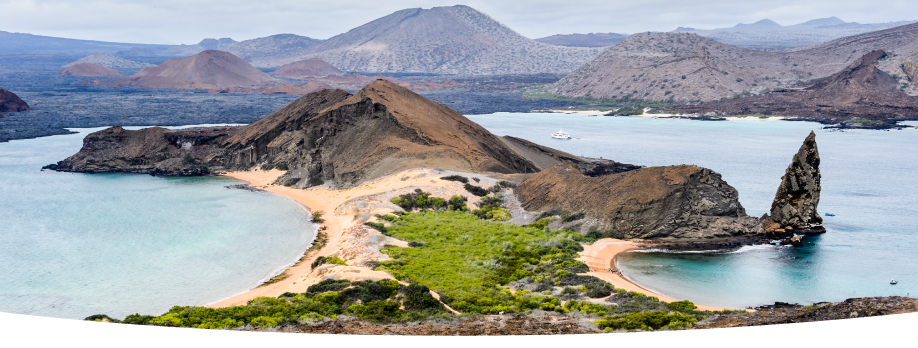

Yacht Natural Paradise:
Cruise A
Cruise A
This brand-new luxury yacht offers large suites, private balconies and a spacious sundeck. 9 cabins.
INCLUSIONS
• Roundtrip Air & Ground Transfers
• Cruise Accommodations
• Cruise Accommodations
• Galapagos National Park Entrance Fee
• Excursions with Naturalist Guide
• All Meals
• All Meals
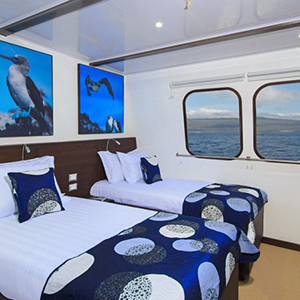
San Cristobal
Tuesday:
AM: Flight to Galapagos from Quito / Guayaquil Airport: Upon arrival at San Cristobal Airport, a guide will meet you, collect your luggage, and escort you to the harbor, where you will board the ship and be escorted to your cabin. After being welcomed by the crew, you will attend a short safety briefing.
PM: Kicker Rock: This striking rock formation is located a couple hours off the western shore of San Cristobal. Jutting out of the water, the rocks stand vertically at hundreds of feet above the ocean, divided by a small channel. Although there are no landing areas, kayaking and scuba diving allow visitors to spot a variety of marine life.
(Dinner & Accommodations, Natural Paradise)
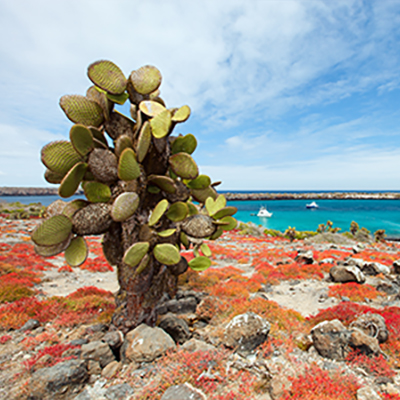
North Seymour - South Plaza Island:
Wednesday:
AM: North Seymour: Dry landing. Galapagos sea lions, blue-footed boobies and magnificent frigate birds are abundant on North Seymour Island. The island was formed by a series of submarine lava containing layers of sediment that were uplifted by tectonic activity. Its arid vegetation zone characterizes the island.
PM: South Plaza Island: (Dry landing) Head to South Plaza Island. This small island with steep cliffs was formed by rising lava and is now covered by Opuntia cacti. It is also home to one of the largest sea lion colonies in the Galapagos, as well as colorful yellow and red land iguanas. The most characteristic plant is Sesuvium (ice plant). During the rainy season its color is a greenish to yellowish tone and in the dry season (end of June through January) a bright red.
(Breakfast, Lunch, Dinner & Accommodations, Natural Paradise)
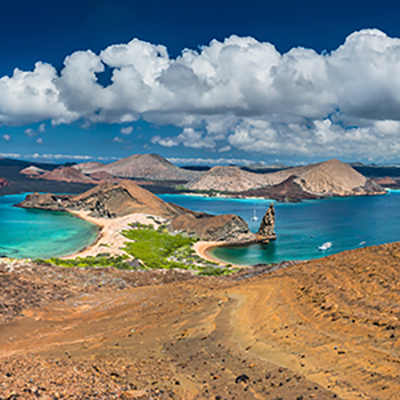
Rabida Island - Bartholomew Island:
Thursday:
AM: Rabida Island: (Wet landing) Rabida Island (Jervis) is one of the most colorful and volcanically varied islands in the archipelago, and a great snorkeling site. Its famous maroon sandy beach and stunning lookouts provide wonderful landscapes. The island is a birdwatcher's delight. Some of the rarest species are in abundance, such as nine varieties of finches, large-billed flycatchers, Galapagos hawks and brown pelicans.
PM: Bartholomew Island: Home of the famous Pinnacle Rock, Bartholomew consists of an extinct volcano with a variety of red, orange, black and even green volcanic formations. A trail of stairs leads to the summit of the volcano, boasting one of the best views of the islands. The beach is perfect for snorkeling and possible sightings of the Galapagos penguin.
(Breakfast, Lunch, Dinner & Accommodations, Natural Paradise)
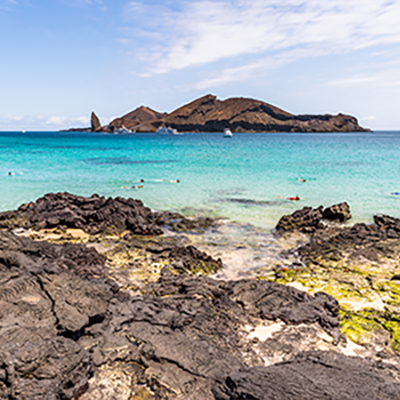
Santiago - Sullivan Bay - Santa Cruz - Dragon Hill:
Friday:
AM: Santiago - Sullivan Bay: (Wet landing) A coral beach landing leads you towards a lava field as far as the eye can see. Hunt and peck over the two distinguished types of lava, pahoehoe and 'a'a, for signs of plant life that have managed to emerge over the past 100 years since the most recent volcanic explosion. A truly amazing volcanic experience... up close and personal! Be sure to wear good solid walking shoes or boots as the 'a'a lava is very sharp and pointy.
PM: Santa Cruz - Dragon Hill: (Dry landing) Situated on Santa Cruz Island, Dragon Hill is one of the newest visitor sites accessible to tourists in the Galapagos Islands. One of the lengthier Galapagos walking trails will lead visitors along a beach and up a trail to the lagoon lookout where bright flamingos, pintail ducks, and land iguanas can be spotted.
(Breakfast, Lunch, Dinner & Accommodations, Natural Paradise)
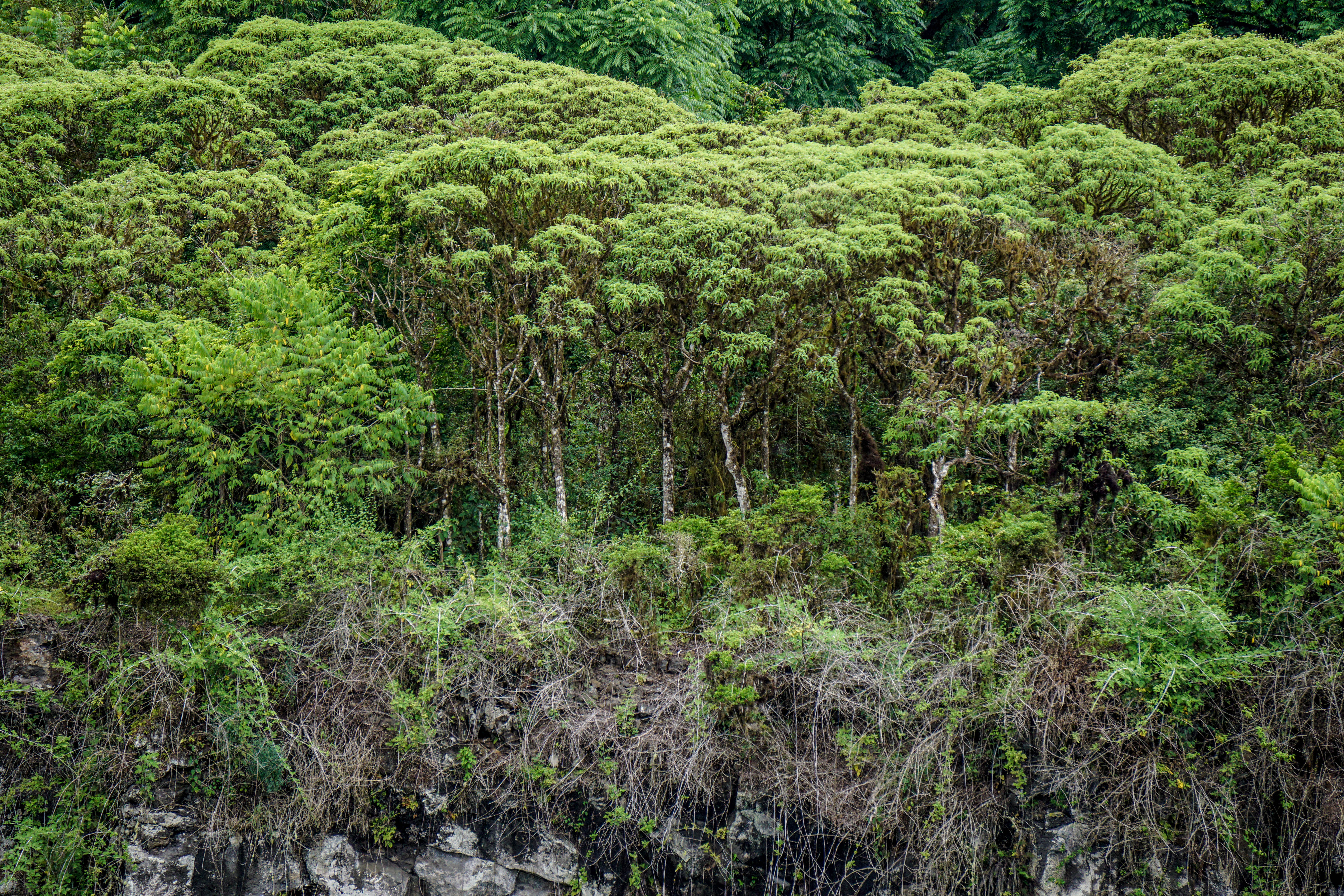
Santa Cruz - Highlands/Twin Craters:
Saturday:
AM: Santa Cruz - Highlands/Twin Craters:
(Dry landing) Reached by bus from Puerto Ayora, the highlands of Santa Cruz are a deep green contrasting beautifully with much of the dry, lower islands. The dominant vegetation in the highlands is the forest of Scalesia trees, creating the lush green color. The lava tubes, over half a mile long, are underground and walking through them is a unique, surreal experience. Los Gemelos, or the Twin Craters, are located opposite each other on both sides of the road leading from Puerto Ayora to Baltra. The name is only figurative; not real craters, these formations were created by the collapse of surface material in underground fissures and chambers. The view is breathtaking.
PM: Santa Cruz - Fausto Llerena Breeding Center: The Charles Darwin Research Station is home to giant tortoises ranging from 3-inches (new hatchlings) to 4-feet long. Subspecies of tortoises interact with one another and many of the older tortoises are accustomed to humans stretching out their heads for a photo opportunity. The babies are kept until they are about four years old and strong enough to survive on their own.
(Breakfast, Lunch, Dinner & Accommodations, Natural Paradise)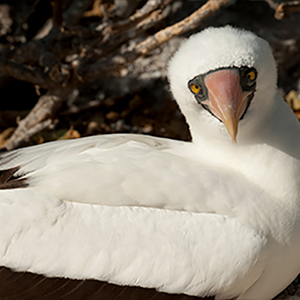
Genovesa - El Barranco - Darwin Bay:
Sunday:
AM: Genovesa - El Barranco:
(Dry landing) Also known as Prince Phillip's Steps, El Barranco's steep, rocky paths leads up to a high cliff-face. A marvelous view can be appreciated from here. This site is also home to palo santo trees as well as red-footed boobies, short-eared lava owls, Galapagos swallows, and Galapagos doves.
PM: Genovesa - Darwin Bay:
(Wet landing) This white sand coral beach heads a half-mile trail that winds through mangroves filled with land birds. Nazca boobies, red-footed boobies, and swallow-tailed gulls can be spotted here. Further down the path are tidal pools where sea lions swim playfully. At the end is a spectacular view off a cliff. (Breakfast, Lunch, Dinner & Accommodations, Natural Paradise)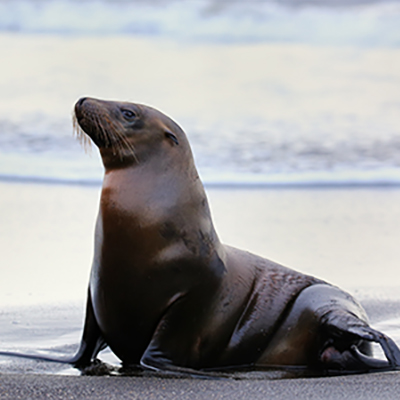
Santiago - Espumilla Beach / Buccaneer Cove - Egas Port:
Monday:
AM: Santiago - Espumilla Beach / Buccaneer Cove:
(Wet landing) Espumilla Beach is a popular place for marine iguanas and Sally Lightfoot crabs. The crabs attract the hunting herons performing the dance of predator and prey. With an abundance of marine life including octopi, moray eels, and sharks, snorkeling is highly recommended. Buccaneer Cove is a testament to the fact that Santiago Island was once a refuge for British buccaneers. These pirates would anchor in the protected bay to make repairs and stock up on tortoise meat among other things. The steep cliffs, where hundreds of seabirds perch in front of the dark red sand beach, are a magnificent sight.PM: Santiago - Egas Port:
(Wet landing) Also known as James Bay, Egas Port is home to the curious Galapagos hawks and quick-footed Galapagos lava lizards. The trail leads to a coastline with gorgeous tide pools and grottos full of fauna. Here the Galapagos fur sea lions bathe in the sun. This is also a great snorkeling site.
(Breakfast, Lunch, Dinner & Accommodations, Natural Paradise)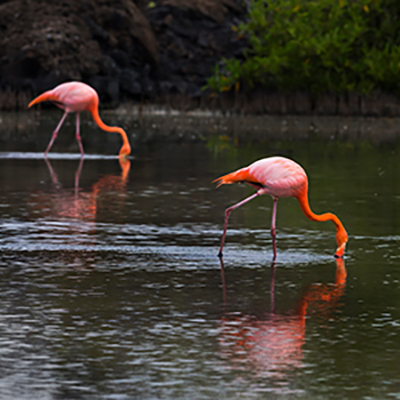
Santa Cruz - Bachas Beach:
Tuesday:
AM: Santa Cruz - Bachas Beach:
(Wet landing) Located on the north shore of Santa Cruz, Las Bachas is a swimming beach. One of the few remnants of the U.S. World War II presence in the Galapagos, a floating pier, can be seen here. You may see flamingos, Sally Lightfoot crabs, hermit crabs, black-necked stilts, and whimbrels. Sea turtles also nest off the beach.PM: Santiago - Egas Port:
After this visit, we will head back to Baltra Airport for the return flight to the mainland.
(Breakfast, Lunch, Dinner & Accommodations, Natural Paradise) ** Itinerary and inclusions are subject to change

